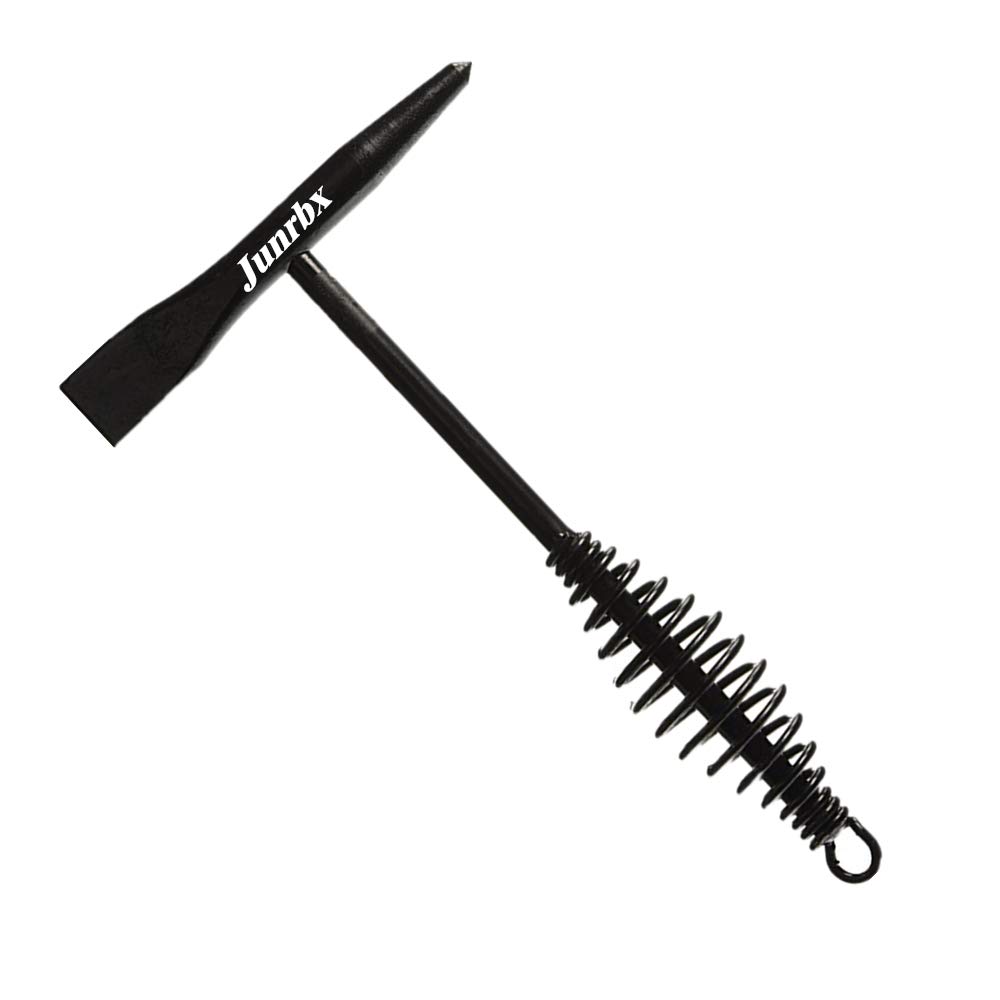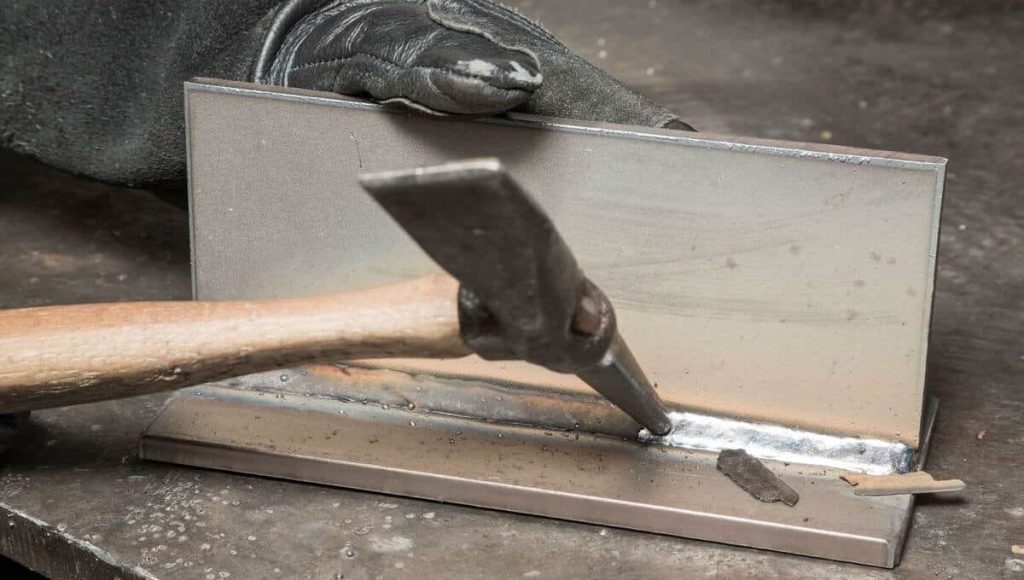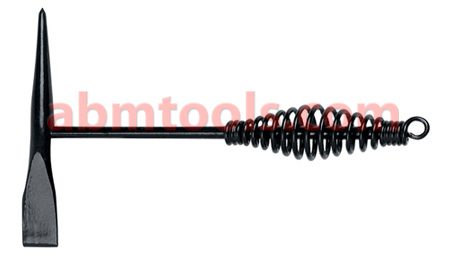We’ve all been there, standing in front of a pile of slag with a regular hammer in hand, wondering if it’s up to the task. After all, the jagged edges and hardened surface of slag require some serious chipping power. But can a regular hammer handle the job? In this article, we’ll explore the ins and outs of using a regular hammer for chipping slag, discussing its effectiveness, potential risks, and alternative tools that might just save the day. So, before you start swinging away, let’s find out if your trusty hammer is up for the challenge of tackling that stubborn slag.
Can I Use a Regular Hammer for Chipping Slag?
Understanding Slag and Chipping
Before we dive into the topic of whether a regular hammer can be used for chipping slag, let’s first understand what slag is and what chipping entails.
Slag is a byproduct that is formed during the process of smelting or refining metals. It is essentially a molten material that solidifies upon cooling. Slag can vary in composition and appearance, depending on the type of metal being processed. It is typically characterized by its glassy or crystalline texture and can be found in various colors, such as black, gray, or brown.
Chipping, on the other hand, refers to the act of removing or breaking off slag from the surface of a metal object. This is done to ensure a smoother and cleaner finish, as slag can affect the overall appearance and structural integrity of the metal.
What is Slag?
As mentioned earlier, slag is a byproduct of metal smelting or refining processes. It is formed when impurities present in the metal ore react with fluxes and other materials used during the melting or refining process. These impurities, also known as non-metallic inclusions, rise to the surface and solidify upon cooling, forming slag.
Slag is typically composed of various compounds, including silicon dioxide, calcium oxide, aluminum oxide, and iron oxide. Its composition can vary depending on the type of metal being processed and the specific smelting or refining method employed.
What is Chipping?
Chipping, in the context of slag, refers to the process of removing or breaking off the solidified slag from the surface of a metal object. This is typically done using a chipping hammer, which is a specialized tool designed for this purpose.
Chipping is an important step in metalworking processes as it helps improve the quality and appearance of the final product. By removing the slag, the surface of the metal can be cleaned, resulting in a smoother finish. Additionally, chipping slag can also help prevent any potential safety hazards that may arise from the presence of slag particles.
The Importance of Chipping Slag
Chipping slag is of significant importance in various industries that involve metalworking. Whether it’s in welding, fabrication, or construction, removing slag is crucial to ensure the integrity and aesthetics of metal objects.
Slag left on the surface of a weld, for example, can compromise the strength and quality of the joint. It can also lead to corrosion and other forms of deterioration over time. Therefore, chipping slag is necessary to maintain the structural integrity and longevity of metallic structures.
Furthermore, the removal of slag also contributes to the overall appearance of the metal object. A clean and smooth surface not only enhances the visual appeal but also allows for better paint adhesion, coating application, or further welding operations.
Risks and Challenges of Chipping Slag
While chipping slag is an essential task, it is important to be aware of the risks and challenges associated with it. Chipping can create flying debris, which can pose a safety hazard if not managed properly. The sharp and jagged edges of slag particles can cause injuries to the eyes, face, or other exposed body parts.
Additionally, the process of chipping itself can be physically demanding, especially if the slag is thick or hardened. This may require significant force and repetitive motions, which can put strain on the muscles and joints.
Furthermore, depending on the composition of the slag, there may be additional risks involved. Some types of slag may contain toxic or hazardous substances, such as heavy metals, which can pose health risks if proper precautions are not taken.
Considerations When Choosing a Hammer
Now that we have a better understanding of slag and chipping, it is important to consider the type of hammer that would be most suitable for this task. While a regular hammer may seem like a viable option, it is essential to consider a few key factors before making a decision.
Firstly, the size and weight of the hammer are important considerations. Chipping slag can be a physically demanding task, so a hammer that is comfortable to handle and provides enough force is crucial. It should be heavy enough to effectively break off the slag but not too heavy to cause excessive strain or fatigue.
Additionally, the durability and strength of the hammer are also important considerations. Chipping slag can be a repetitive and high-impact task, so a hammer that is built to withstand such demands is necessary. It should be made of sturdy materials that can withstand the force applied during chipping without getting damaged.
Lastly, the shape of the hammerhead is another crucial consideration. For chipping slag, a hammerhead with a flat or slightly rounded surface is preferable. This allows for better contact with the slag and reduces the risk of damaging the surface of the metal object.
Types of Hammers
When it comes to chipping slag, there are several types of hammers available that are specially designed for this purpose. Let’s explore some of the common types:
-
Chipping Hammer: A chipping hammer is a specialized tool designed specifically for chipping slag. It usually features a sturdy handle and a chisel-shaped head with a flat or slightly rounded face. The chisel-shaped head allows for effective chipping and removal of slag from the metal surface.
-
Ball Peen Hammer: While not specifically designed for chipping slag, a ball peen hammer can be used in certain situations. It features a round, ball-shaped head on one end and a flat face on the other. The flat face can be used for chipping, although it may not be as effective as a chipping hammer.
-
Scaling Hammer: A scaling hammer is another type of hammer that can be used for chipping slag. It typically has a wide chisel-shaped head with a flat face that allows for effective scaling and removal of slag.
Characteristics of a Regular Hammer
Now, let’s consider the characteristics of a regular hammer and whether it is suitable for chipping slag.
A regular hammer is typically designed for general-purpose tasks, such as driving nails or light-duty construction work. It usually features a claw-shaped head on one end for removing nails and a flat face on the other end for striking.
While a regular hammer can provide some level of impact force, it may not be as effective or suitable for chipping slag. Regular hammers are generally lighter in weight compared to specialized chipping hammers. They may lack the durability and strength required for repetitive and high-impact tasks like chipping slag.
Additionally, the shape of the hammerhead on a regular hammer may not be optimal for chipping slag. The flat face of a regular hammer may not provide the same level of contact and effectiveness in removing slag as a specialized chipping hammer would.
Effectiveness of a Regular Hammer for Chipping Slag
While a regular hammer may not be the most ideal tool for chipping slag, it can still be used in certain situations. If the slag is relatively thin or soft, a regular hammer can provide enough force to chip off small portions. However, it is important to note that using a regular hammer for chipping slag may require more effort and may not be as efficient or effective as using a specialized chipping hammer.
In cases where the slag is thick or hardened, a regular hammer may not be sufficient to effectively remove the slag. This can result in a longer and more labor-intensive chipping process.
Therefore, if chipping slag is a regular task in your metalworking operations, it is highly recommended to invest in a specialized chipping hammer. These hammers are specifically designed to meet the demands of chipping slag and provide optimal performance and efficiency.
Alternatives to a Regular Hammer for Chipping Slag
If a regular hammer is not suitable or available for chipping slag, there are alternative tools that can be used. Here are some options to consider:
-
Chipping Hammer: As mentioned earlier, a chipping hammer is the most suitable and commonly used tool for chipping slag. It is specifically designed for this task, with a chisel-shaped head that allows for effective removal of slag.
-
Scaling Chisel and Hammer: A scaling chisel, coupled with a hammer, can also be used for chipping slag. The scaling chisel is a specialized tool designed for scaling or removing debris from surfaces, including slag. It features a long and narrow blade with a chisel-like edge, which can be used in conjunction with a hammer to chip off slag.
-
Pneumatic or Electric Scaling/Grooving Tools: In industrial or heavy-duty applications, pneumatic or electric scaling tools may be used for chipping slag. These tools offer increased power and efficiency, making them suitable for larger or more demanding chipping tasks.
Conclusion: While a regular hammer can be used for chipping slag in certain situations, it may not provide the same level of effectiveness, efficiency, and durability as a specialized chipping hammer. Considering the importance of chipping slag in ensuring the quality and longevity of metal objects, investing in a suitable chipping hammer is highly recommended. By using the right tool for the job, you can achieve optimal results while minimizing the risks and challenges associated with chipping slag.











































